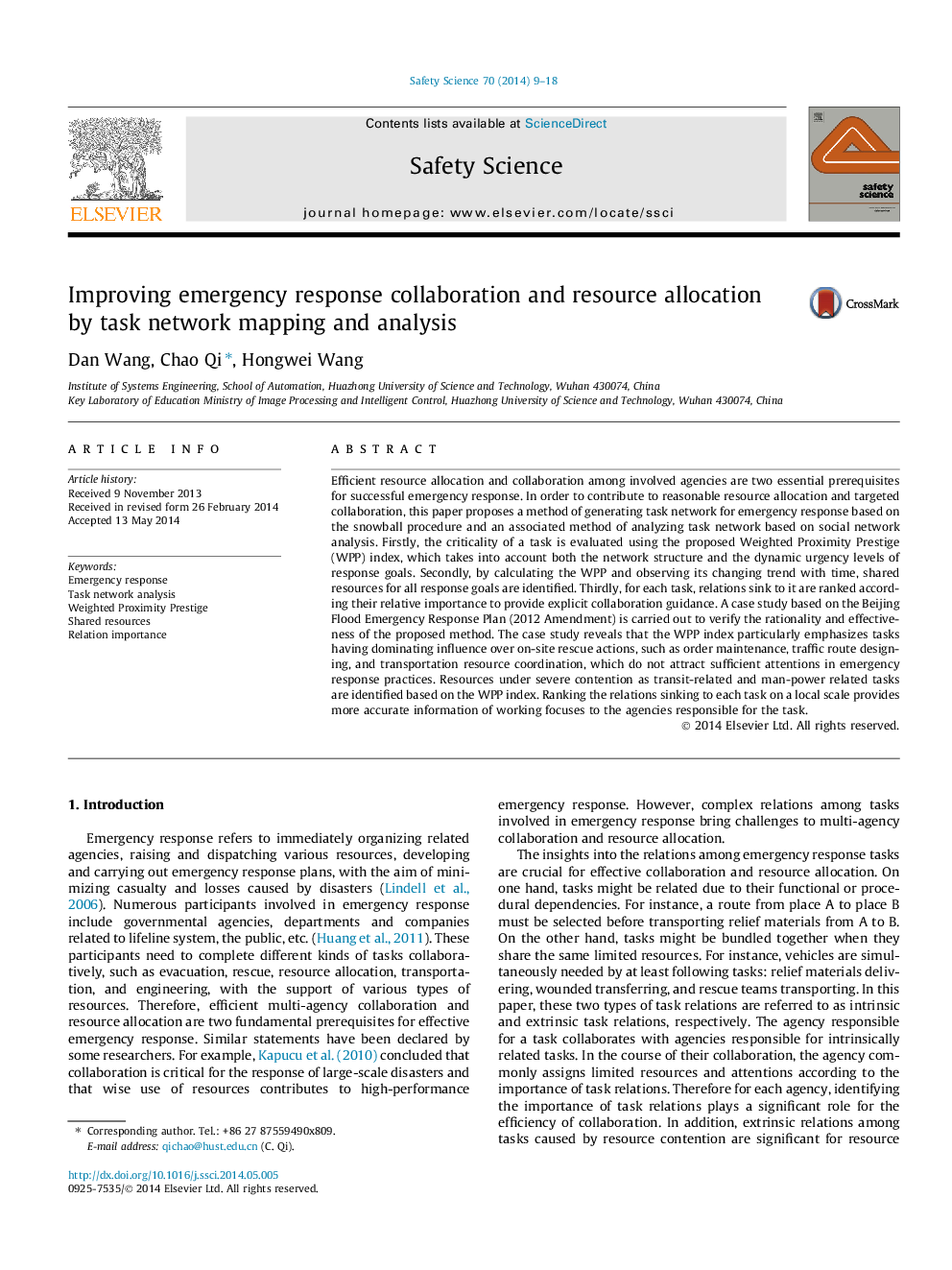| Article ID | Journal | Published Year | Pages | File Type |
|---|---|---|---|---|
| 6976061 | Safety Science | 2014 | 10 Pages |
Abstract
Efficient resource allocation and collaboration among involved agencies are two essential prerequisites for successful emergency response. In order to contribute to reasonable resource allocation and targeted collaboration, this paper proposes a method of generating task network for emergency response based on the snowball procedure and an associated method of analyzing task network based on social network analysis. Firstly, the criticality of a task is evaluated using the proposed Weighted Proximity Prestige (WPP) index, which takes into account both the network structure and the dynamic urgency levels of response goals. Secondly, by calculating the WPP and observing its changing trend with time, shared resources for all response goals are identified. Thirdly, for each task, relations sink to it are ranked according their relative importance to provide explicit collaboration guidance. A case study based on the Beijing Flood Emergency Response Plan (2012 Amendment) is carried out to verify the rationality and effectiveness of the proposed method. The case study reveals that the WPP index particularly emphasizes tasks having dominating influence over on-site rescue actions, such as order maintenance, traffic route designing, and transportation resource coordination, which do not attract sufficient attentions in emergency response practices. Resources under severe contention as transit-related and man-power related tasks are identified based on the WPP index. Ranking the relations sinking to each task on a local scale provides more accurate information of working focuses to the agencies responsible for the task.
Keywords
Related Topics
Physical Sciences and Engineering
Chemical Engineering
Chemical Health and Safety
Authors
Dan Wang, Chao Qi, Hongwei Wang,
